Frequently Asked Questions about the Camino de Santiago
The Camino de Santiago is a unique experience, but many questions often arise before embarking on this adventure. Below, we answer the most common doubts so you can make the most of your journey.
How many stages does the Camino de Santiago have?
The number of stages depends on the route you choose and your pace. For example, the Camino Francés, one of the most popular routes, consists of about 30-35 stages if you start from Saint Jean Pied de Port, while the Camino Portugués from Tui can be completed in just 5-6 stages.
Which Camino de Santiago route is the shortest?
The Camino Francés from Sarria and the Camino Portugués from Tui are ideal options if you're looking for shorter routes. Both exceed the 100 km required to obtain the Compostela and can be completed in less than a week.
What is the approximate cost of doing the Camino de Santiago?
The budget varies depending on the type of accommodation and services. It can differ significantly between staying in albergues and opting for hotels or historic inns (pazos).
What is the most challenging stage of the Camino de Santiago?
Some stages are particularly demanding due to distance or incline. For example, the stage between Saint Jean Pied de Port and Roncesvalles on the Camino Francés or the ascent to O Cebreiro can be challenging for less experienced pilgrims.
Can I shorten or split the longer stages?
Absolutely! If you find a stage too long, you can divide it by staying in intermediate towns. This is possible on most routes, depending on the availability of accommodations.
How well marked is the Camino de Santiago?
The Camino is very well marked with the iconic yellow arrows and waymarkers featuring the scallop shell. However, it’s helpful to carry an app or itinerary like the one we provide at Camino de Santiago Reservas to ensure your route, especially in rural areas.
Which is the easiest route of the Camino de Santiago?
The Camino Francés from Sarria and the Camino Portugués from Tui are considered accessible due to their mostly flat terrain and shorter stages. They are ideal for beginners.
How many days does it take to do the Camino de Santiago?
It depends on the route. A long route like the full Camino Francés can take between 30 and 35 days, while shorter routes like the Camino Portugués from Tui can be completed in 5 days.
Which is the most picturesque route of the Camino de Santiago?
Each route has its charm. The Camino del Norte, with its views of the Cantabrian Sea, and the Camino Primitivo, surrounded by nature, are considered some of the most beautiful by many pilgrims.
What is the best time of year to do the Camino de Santiago?
Spring (April-June) and autumn (September-October) are the preferred seasons for pilgrims due to their pleasant weather and smaller crowds. In summer, it’s important to prepare for the heat and the larger number of walkers.
How can I organize my arrival at the starting point?
There are numerous transport options to reach the start of your route: buses, trains, and private transfers. Planning ahead is key, especially for less frequented routes.
Where can I stamp the pilgrim’s credential?
You can stamp your credential at churches, albergues, bars, and tourist offices. At least one stamp per day (or two in the last 100 km) is required to obtain the Compostela upon reaching Santiago.
What happens if I cannot complete all the stages?
If you decide to do fewer stages or need to leave the Camino for any reason, you can resume it later from where you left off. Flexibility is one of the great advantages of the Camino de Santiago.
Conclusion
We hope these answers have clarified your doubts about the Camino de Santiago. If you have any specific questions, do not hesitate to ask us. Buen Camino!



